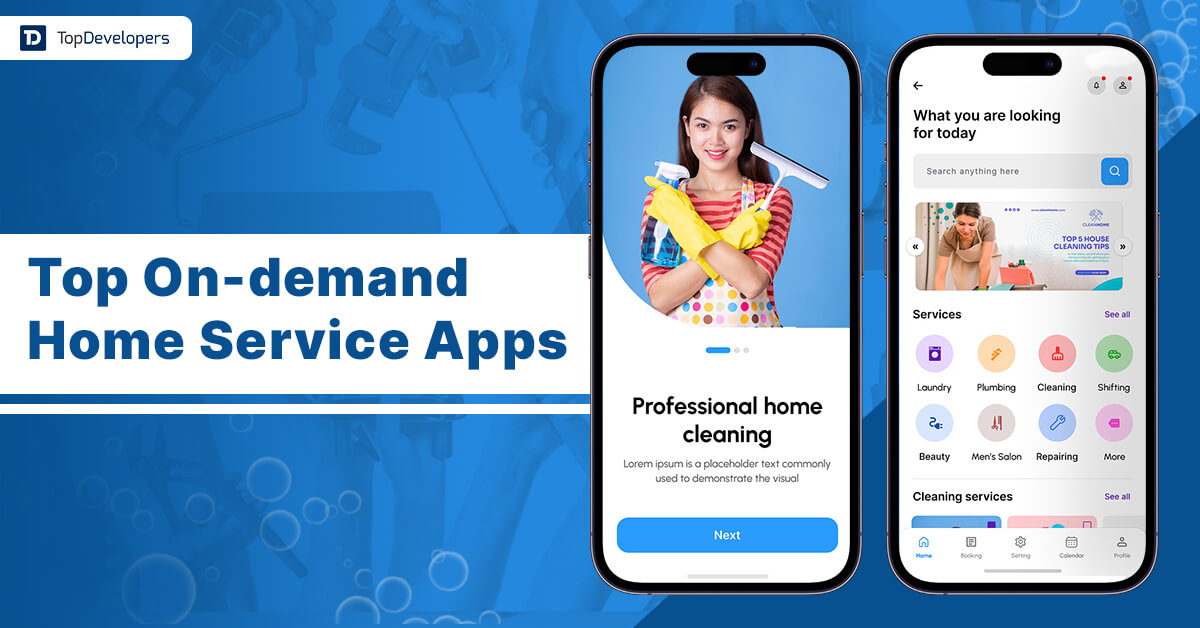
According to Statista, 3.5 million Android apps, and 2.2 million iOS apps, that’s whopping around 5 million apps used by the people in 2022. The growing prominence of mobile app development globally has made businesses harness the potential of mobile apps to reap a range of benefits.
Businesses are seeing value in mobile apps for enhancing user experience, improving branding strategy, increasing brand interactions, uplifting user satisfaction, intensifying conversion and ROI, and more. However, even after weaving mobile apps into the business fabric, businesses are failing to achieve desired success.
The reason behind the unfortunate failure is the negligence of user pain points when the app idea is conceptualized and launched in the market. The users have no tolerance for app crashes, awkward pauses between screens, text overlap, and clicking buttons to nowhere which ultimately frustrates the users and makes them switch to another app. Hence, partner with mobile app development companies that keep user pain points identification at the core of the product discovery stage.
It means the inability to find user pain points at the time of app development creates a graveyard for your business app. Realizing the need for user pain points identification and their solution through the app, we have created a list of pain points faced by users. It is critical to keep them in mind while building a mobile app as addressing it will directly affect the success of your mobile app.
Table of Contents
How to Identify User Pain Points for Mobile Apps?
The steps to developing an app help businesses create flawless solutions. In the same vein, identifying the pain points of the users is important to make the mobile app resonate with target users. The following steps would help know the users’ pain points for a successful mobile app launch.
Identify Who is your Target Audience
The mobile applications are built for users and meet their needs. When businesses think about building a mobile app, all of their decisions revolve around target users. At first, businesses need to identify the target audience and then they can proceed with users’ pain points identification. When the mobile app is built, the user segmentation is done to proceed with meeting the need of a user group.
Perform User Research Extensively
When you are done with user segmentation, the next step is to delve into the depth of the users’ details. The exploratory research helps in identifying the pain point that the user segment is facing in their lives and illustrates how mobile applications solve this pain. The users’ pain points identification is a vital part of product discovery that must be taken judiciously so that efforts won’t go in vain.
The research and strategy creation would help in engineering the best UX design in the mobile app without even asking the users directly. The research even identifies the pain points that target users are unaware of and they warmly embrace the solution when it’s presented to them. The user research can be performed optimally in various ways-
- Ask industry experts or analysts to get rich insights into users’ needs and previous attempts that other businesses took to meet the unmet needs.
- Research the existing application that’s solving the pain point. Looking at reviews and feedback for functionalities and design helps in identifying the room for improvement. You can take this as an opportunity to differentiate the app from the crowd.
- Conducting research through surveys or interviews helps in knowing user perspectives toward a mobile application that addresses real issues.
Define Target Users’ Need
Exploratory research unearths users’ behavior and attitude toward the mobile app to be built for solving their pain points. Also, it reveals insights into growing bounce rates. Businesses need to accurately define what exactly users need by creating user personas and user journey mapping.
User personas are essentially user profiles that display user behavior, user goals, demographics, and other needs, which helps in validating the assumptions made for users’ pain points. It enables getting a 360-degree view of the mobile app to build targeting a specific user segment. Basically, the user persona answers the following questions, which are- users’ lifestyle, core issues that the app solves, users’ expectations, and pain points interfering with user experience.
The ability to track user journeys helps businesses make the app adapt to changing user behavior. The user-centric strategy lends a hand in turning users into potential, loyal customers. That’s where user journey mapping sheds light on the user experience, user interactions, and what needs to improve. It helps to know the users’ perception of the brand and the areas that make users angry or turn away from the brand.
Validate User Research
Mobile app development is not an inexpensive endeavor. Businesses need to spend a lot of money, time, and effort on app development, which makes it essential to know all the efforts are put in the right direction. Having a proper understanding of targeted users affects the cost of mobile app development.
Cut to the chase: All of the research helps in creating assumptions for target userbase behavior for using mobile applications. Validating the assumptions is necessary because no one other than end users can reveal the real pain points. After creating user personas and mapping user journeys, businesses can get build an MVP to test the app’s USP in the market and iterate the mobile app accordingly. This approach is helpful in building and continuously enhancing the app according to users’ expectations.
User validation testing is popular to get user feedback during mobile app testing and iterate the app earlier so that after the final launch of the mobile app, users’ pain points are brilliantly solved. Thereby user acceptance testing ensures the mobile app needs align with business goals, the solution is bug-free and perfect for release.
Conclusion
Daily, people spend nearly 3 hours and 28 minutes on mobile apps globally. Most of this time is spent on the apps, out of need only. It indicates the mobile app must serve its purpose and help people get rid of the problem with an optimal solution. That’s where user pain points identification during the product discovery step comes in. It plays a vital role in making the app a great success.
Consider identifying user pain points that finally turn your app into a one-stop shop for all the specific users’ needs that they are looking for in different applications. Furthermore, following the process provides the opportunity to find a USP that helps in gaining an extra edge in the competition.
My two cents: All of these are possible when you team up with a company that conducts discovery workshops and helps you to create a mobile app solution that solves the real needs of the target users.
 Avantika Shergil
| May 24, 2023
Avantika Shergil
| May 24, 2023
Avantika Shergil is a technology enthusiast and thought leader with deep expertise in software development and web technologies. With over 8 years of experience analyzing and evaluating cutting-edge digital solutions, Avantika has a knack for demystifying complex tech trends. Her insights into modern programming frameworks, system architecture, and web innovation have empowered businesses to make informed decisions in the ever-evolving tech landscape. Avantika is passionate about bridging the gap between technology and business strategy, helping businesses build customized software and website, and understand about different tools to leverage effectively for their ventures. Explore her work for a unique perspective on the future of digital innovation.







